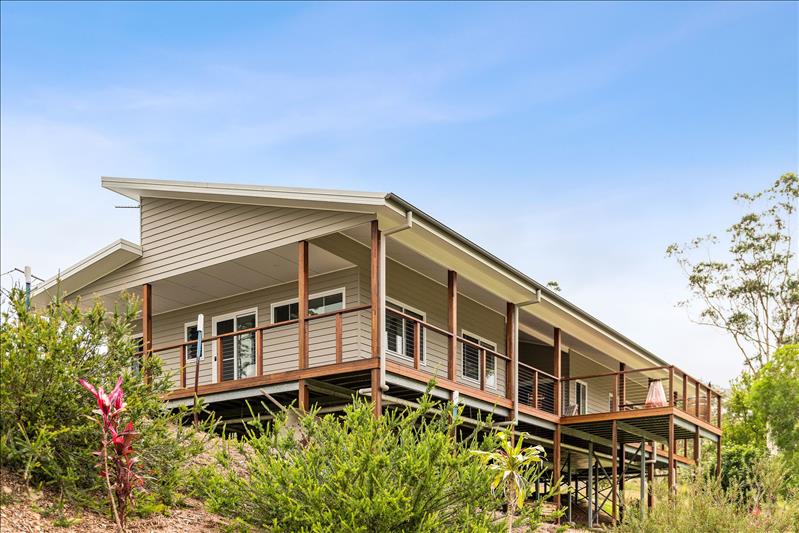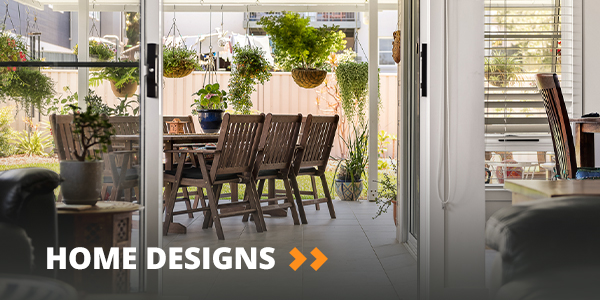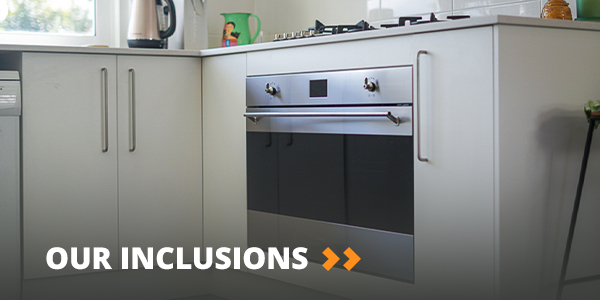
The journey to designing your new home, despite being fun and exciting, is also very exhausting. It is completely understandable to put in a lot of work for your home since it is your personal space where you feel most comfortable, giving you a sense of peace and security while basking in the colours, furniture and fixtures that reflect your personality. But who is to say that you cannot extend that feeling outside?
One of the most common elements that the majority of new homeowners decide to add in their outdoor spaces are plants. No matter where you are building here around the Tweed Valley you see beautiful plants that are flourishing and gardens that look absolutely amazing.
Plants don't justy add value to the overall visuals of your house, it also provides health benefits such as:
✓ Boost air quality
✓ Encourage healthy eating
✓ Decrease risk of illness
✓ Relieve stress and anxiety
Unlike indoor plants, outdoor plants need more care, especially in the beginning. The process in choosing the proper outdoor plants can also get a little tricky since you will have to consider factors such as micro-climates and the different soils across your site in order for your chosen plants to thrive. The country experiences all types of weather extremes so it is important to be mindful of your site conditions as well as your area’s climate throughout the year.
Plants For Dry Land
Just in case you didn't know, Australia is actually the driest inhabited continent in the world with 70% of the country either arid or semi arid land, which means that these areas receive very little to no rainfall at all. That is why it is not surprising how the country has a lot of plant species that can withstand the extreme heat, so if you have an area in your landscape that's occasionally wet but dries reasonably well in a few days, you might consider these plants.
Agapanthus - Also known as African lily, this stunning plant species originates from South Africa that is easy to grow even in poor soil conditions, is especially tolerant of drought thanks to its large water-storing roots. Just like most plants, they need to be watered and nourished when first planted but once they start to grow and get settled, these tough plants can withstand long dry periods easily if positioned in a sunny space with well-drained soil. Agapanthus can be a focal point or provide a burst of colour to your garden. They are non-dominating so they are the perfect size for your borders.
Acacia - Also known as wattles, this iconic plant is known as one of the most drought-tolerant plants you can have in your garden thanks to their tough structure highly resistant to moisture loss. This native plant, usually found growing in the Australian bush, is well suited to harsh climates though does have a notoriously short life.
Agave - They are known to be one of the best architectural plants that can easily be the focal point of any outdoor landscape. These perennial succulents often have dramatic fleshy leaves with serrated edges and spiny pointed tips that are easy to grow in sunny spaces with well-drained, sandy soil, ideal for borders or rockeries. Agave is a low maintenance plant that is drought-tolerant and doesn't ask for much water and attention.
Plants For Wet Land
One common concern that puts people off in trying their hand at gardening is the constant rain. Most people are under the impression that plants cannot withstand heavy rain. Although that may be true to most plants, there are also plants that are built differently and are made to thrive in these types of environments.
Iris - They are known to be valuable high water problem solvers. These semi aquatic species are so dynamic that they can actually live in dry soil as well as thrive in saturated, poorly drained conditions. Irises are beautiful and often showy flowers that provide textural contrast against the typical round garden plants and create beautiful blooms at the end of their season.
Blue Vervain - They are known as traditional herbal medicine that performs best in full natural light and moist, well-drained, moderately rich soil but adapts readily to degraded wetlands and other disturbed areas. Apart from its striking blue-violet flowers, blue vervain is commonly used for emotional and psychological well-being, especially for conditions relating to anxiety and feeling overwhelmed.
Japanese Painted Fern - These ferns are a lot different from the plain green ferns that are more familiar to most people, they are more colourful, offering triangular, silvery leaves that sport an arching habit. Ideally, these ferns bode well in the north-facing sites of the house since being provided with the ample amount of sunlight is crucial for its survival. The Japanese Painted Fern with its elegant colours could definitely brighten any shady area.
So just imagine it raining again and the dark hues of gray dominating your surroundings but when you look outside you see the bright colours of your garden - what a mood changer!
Plants For Coastal Areas
The coastal areas are dominated by the soft hues of blue and cream but bringing earthy colours into the fold isn’t such a bad thing. Plants that grow along the coast are very tolerant of the winds and salt and sand loaded ocean spray so they must be adapted to sandy saline soils, with extremely low nutrient loads, and low water holding capacity.
Banksia Integrifolia - These plants are usually found fast-growing along the east coast of Australia. They boast beautiful greens, silvers and flowers of pale yellow, and coping with salt and wind, making them a great coastal choice. Bankasias are more than just ornamental plants, they are also highly tolerant of full coastal conditions and can be used for beach reclamation and erosion control.
Westringia Fruticosa - They’re great for seaside gardens due to their strong resistance to salt spray. They offer dense, fine leaves and beautiful small white flowers that attract a variety of birds and wildlife that's a great bonus for the overall health of your garden.
Carpobrotus Glaucescens - Also known as pigface, Carpobrotus Glaucescens is a type of succulent that produces a striking bright pink flower, similar in aesthetic to daisies. They can withstand salt-spray, slat soils and dry-periods. Pigface helps stabilise the sand dunes and attracts bees and other insects.
Plants For Inland Areas
Inland is the opposite of coastal. Instead of the usual blue hues of the beach, you are likely to see more earthy colours as you are most likely situated in the middle of the country. Compared to the coastal areas such as the Tweed Coast NSW, compared to higher up in the Valley, there are a lot more varieties of plants that can actually thrive in this area. The factors that affect the growth of plants in this environment are usually introduction of foreign soils, building materials, and even water supplied by reticulated systems will all affect how well your plants grow.
Since the conditions in inland areas are more favorable than most, you are more free to decide which plants you want to be included in your garden although we highly suggest that you take a short trip to your local nursery and ask for advice on which plants to raise considering your home’s site location, soil condition, and water situation.
Extending That ‘Homey’ Feeling Outside
For many homeowners, planting a garden provides enjoyment. Watching how their garden will grow from a plain, boring space to gorgeous grounds with endless sprawling flowers and vegetation does indeed offer a sense of satisfaction. If you look at the bigger picture however, trying your hand in gardening can be more than just a hobby, it can be a way of extending your living situation outside. Why not consider the whole picture including how your gardens and outside are going to look when you are designing your new home, and work it all out with your sales consultant so that the finished result will come up well
Outdoor living has been proven to help reduce stress, boost creativity, improve the immune system, and improve mood. Something as simple as reading a book in your garden, surrounded by fragrant flowers, soaking up Vitamin D in your system can make a great difference in your lifestyle.



